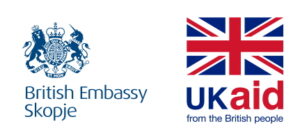Thus, for the first time in the history of the intelligence practice, we saw the implementation of what is known as "Twitter intelligence”: when the intelligence services of the countries use social media as a means of sharing sensitive information in order to increase the influence. Therefore, the intelligence agencies are turning into "influencers" on social media.
The Russian invasion of Ukraine in February 2022 came as a surprise to many. Many experts, policymakers, and practitioners of international politics were also surprised. However, the United States and Great Britain have been warning the public and the leaders of other countries for months about the real possibility of a Russian invasion.
The forecasts of their intelligence services were so accurate that even the exact date of the beginning of the attack was forecasted. Such an approach, where policy makers - deliberately and almost in real-time - declassify and publish the data they collect from their intelligence services, using it as a tool of foreign policy, is considered an inventive approach and has a significant impact on the diplomatic strategy of the countries states in future international crises.
The initial intelligence
In December 2021, they began to publish the first information that Russia plans to launch a military offensive against Ukraine. It was predicted that the invasion could take place in the first months of 2022. One of the first media to publish data from the intelligence services on the mobilization of Russian troops was The Washington Post. At the beginning of December 2021, this newspaper published authentic documents of the intelligence services that included clear satellite images of the extent, positioning, and location of Russian troops that were lined up along the Ukrainian border. Based on this data, the newspaper warns that Russia is planning a military attack against Ukraine with 175,000 soldiers.
At the end of January 2022, the British government also announced that Moscow intended to overthrow the government in Kyiv and install a pro-Russian leadership in its place. Reporting to Parliament, former Prime Minister Boris Johnson stressed that the British intelligence service has convincing information that clearly exposes Russia's intentions to install a puppet regime in Ukraine. Earlier, at the beginning of January 2022, US officials announced that they had collected credible data indicating Russia's intention to stage fake attacks that would serve as a justification for launching the invasion.
By early February, the White House National Security Adviser, Jake Sullivan, said Russia had massed enough forces on the border with Ukraine to mount a military operation and could seize significant territory, including the capital Kyiv. Confident and well-informed by the American intelligence services about the actions of the Russian military, he called the American citizens to leave Ukraine.
The practice of publishing information obtained by the intelligence services for political purposes was used not only before the start of the war. This approach continued to be applied systematically throughout the development of the military clashes in Ukraine. Declassified information on a daily basis from the American and British intelligence services about battlefield developments, military movements and their positions is delivered in nearly real time to the local and international public through the use of social media.
In the past, the countries jealously guarded their intelligence-gathered information, and in some cases, they were classifying it as "top secret" that was shared only with friendly or allied countries. Before the start of the war in Ukraine, but also during the development of the events we could identify a phenomenon, when not only the allied states but also the opposing states and the local and international public opinion are exposed, in real-time, to strategic, operational and tactical information that is distributed for certain political purposes.
Thus, for the first time in the history of the intelligence practice, we saw the implementation of what is known as "Twitter intelligence”: when the intelligence services of the countries use social media as a means of sharing sensitive information in order to increase the influence. Therefore, the intelligence agencies are turning into "influencers" on social media.
Purposes of application of the public intelligence
It goes without saying that this strategy is not accidental. The use of public intelligence by the United States and Great Britain in the case of Ukraine was made to achieve several vital goals. First, Western countries believed that the declassification and publication of data obtained by the intelligence services would serve as a preventive mechanism against Russia attacking Ukraine.
 Source: freepik.com
Source: freepik.com
It was believed that informing the international public of the true plans and intentions of the Russian government and military would make them hesitate and change their minds about the idea of an invasion.
On 19 February 2022, just five days before the invasion began, the U.S president Biden said that we are making Russian plans public, "not because we want conflict, but because we are doing everything in our power to remove any reason that will serve as justification for Russia to invade Ukraine." However, as evidenced by the events that developed after 24 February 2022, the use of public intelligence as a preventive mechanism did not work.
Despite the incredible capabilities shown by intelligence services to uncover Russian activities and their willingness to share that important information with friendly nations, not all allies and partners have come to the same conclusions. Another reason for the use of public intelligence by Western countries was to increase pressure on the allied countries - especially France and Germany - who were initially reluctant to take strong decisions against Russia's aggressive actions, especially after the statement of the German authorities that a withdrawal of the soldiers from the border had begun.
Before the US and UK stepped up the reporting on the positioning of Russian troops and deciphering their malicious intentions towards Ukraine, in January 2021, the German chancellor Scholz claimed that, with a direct meeting with President Putin, he would reassess relations with Russia. In January 2022, in his New Year's speech, he underlined the importance of a "constructive dialogue" between Germany and Russia!
Another compelling reason for the motives behind the use of public intelligence by Western countries was the exposure of fake news and the distribution of disinformation by Russian-controlled intelligence institutions, agencies, and media. So the objective was to build a counter-narrative that neutralizes the Russian narrative about the reasons and motives for starting the war. Russia is known to have experience and expertise in using hybrid warfare tactics, spreading fake news and disinformation—especially in cyberspace and via social media—aimed at creating an environment conducive to building "narrative superiority" in public opinion.
Therefore, the persistent opposition of the Western countries to this well-planned Russian campaign raised the vigilance of international public opinion and, at the same time, strengthened the readiness of the NATO countries for the potential threat and possible consequences that the occupation of Ukraine would create.
In that regard, a change in the tactics of publishing and communicating intelligence information by the British and American services over time can be observed. While from November 2021 to January 2022, the focus was on "strategic warning" in order to use intelligence as a deterrence mechanism, and when it was realized that Russia had already decided to launch the attack and that the deterrence strategy had failed, the Western states began to increase the frequency of information sharing on an almost daily basis, providing copious and detailed information about Russia's efforts to create a pretext and justify the invasion.
Such a tactical shift was intended to shift the approach of using intelligence from the goal of deterring Russian aggression to creating "narrative superiority" against the massive and multidimensional Russian propaganda campaign.
Throughout history, the countries have commonly declassified and used data obtained from their intelligence services to support or influence policy decisions. This type of action is not novelty in terms of how the intelligence services work. However, the role of the intelligence before the beginning of the Russian invasion of Ukraine, but also during the fighting, represents a completely new chapter in the political and diplomatic use of intelligence in international affairs as an instrument of foreign policy.
The speed with which Western governments declassified information, the manner and means used to convey this information, and the public to whom it was directed, are inventive elements in the use of intelligence by policymakers for political purposes.
Please refer to the Terms before commenting and republishing the content. Note: The views and opinions expressed in this article are those of the author and do not necessarily reflect the views of the Institute of Communication Studies or the donor.


